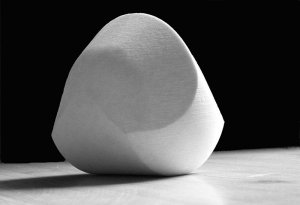Can you trademark a design in the EU?

In Gömböc, the Court of Justice of the European Union (CJEU) has provided some welcome guidance on trademarking designs in the EU, as Frouke Hekker explains.
Figurative signs, such as the shape of a product or its packaging, are protectable as trademarks in the EU. However, registration exclusion grounds have been imposed, to prevent companies from acquiring a monopoly over technical solutions or a product’s aesthetic or functional characteristics, making them difficult in reality to protect.
These grounds exclude shapes and other characteristics (such as colours and sounds) from protection as EU trademarks (EUTMs), if:
- 1) they consist of a shape or characteristic which results from the nature of the goods themselves;
- 2) the shape or characteristic gives substantial value to the goods; or
- 3) the shape or characteristic of the good is necessary to obtain a technical result.
Only shapes and other characteristics that are not excluded on these grounds can obtain trademark protection, but – as with trademarks in general – only if they satisfy criteria for distinctiveness.
Gömböc: Protecting a mathematical decorative object
 In 2015, Gömböc Kutató, Szolgáltató és Kereskedelmi Kft applied to register the Gömböc shape (see image, right), based on a mathematical theory, for goods in class 14 and 21 (decorative items) and class 28 (toys), at the Hungarian IP Office.
In 2015, Gömböc Kutató, Szolgáltató és Kereskedelmi Kft applied to register the Gömböc shape (see image, right), based on a mathematical theory, for goods in class 14 and 21 (decorative items) and class 28 (toys), at the Hungarian IP Office.
The application was rejected on the basis of two exclusion grounds: the shape was necessary to obtain a technical result; and, the shape gives substantial value to the goods. The technical result being that the object always returns to its initial position on a horizontal surface; and, the substantial value being delivered by the stylised and appealing nature of the design.
In the legal proceedings that followed, the Hungarian Supreme Court referred three preliminary questions to the CJEU, requesting guidance on how the second and third exclusion grounds should be interpreted. These can be summarised as follows:
- Does the perception of the relevant public play a role in the assessment if the shape is necessary to obtain a technical result, or should the assessment be made solely on basis of the graphic representation of the sign as was used in the trademark application? (Due to the starting date of these proceedings and the application date of the Gömboc shape as a trademark, this judgment is still based on previously applicable EU trademark law; the requirement of graphic representation has now been replaced by the requirement of clear and precise representation).
- Is the perception of the relevant public towards the applicable shape and/or its knowledge of the reputation of the applicable shape relevant for the assessment of whether the shape gives substantial value to the goods within the meaning of the exclusion ground?
- Hypothetically, if the shape is protected as a design (as a design registration) does that mean that such a shape should be excluded for trademark protection due to the aesthetic value that the design gives to the shape?
The CJEU’s guidance
On 27 April 2020, the CJEU answered those preliminary questions, stating that:
- The assessment of whether the shape is necessary to obtain a technical result does not have to be limited to the graphic representation of that sign. Information about the perception of the relevant public may also be relevant, if the information comes from objective and reliable sources, such as surveys, expert opinions and/or scientific publications.
- In the assessment of whether the shape gives substantial value to the product, the perception or knowledge of the relevant public may be taken into consideration in order to identify an essential characteristic of that shape. However, the ground for refusal may be applied only if it is apparent from objective and reliable evidence that the relevant public’s decision to purchase the good in question is to a large extent determined by that characteristic. The CJEU emphasises, however, that characteristics of the product that are not connected to its shape, such as technical qualities or the reputation of the product, are irrelevant.
- If a sign enjoys protection under design law, it does not necessarily mean that the shape gives substantial value to the product at issue. The rules of EU law concerning the registration of designs and those applicable to the registration of trademarks are independent and without hierarchy, according to the CJEU. The CJEU also stated that, for signs consisting exclusively of the shape of a decorative item, it does not automatically follow that the shape should be excluded as a trademark. This is because the substantial value of this type of item can still result from factors other than its shape, and should be assessed therefore on a case-by-case basis.
It remains to be seen, of course, what this guidance will mean for Gömböc’s decorative item. We will continue to monitor the case and update you once the final decision has been made.
If you have a question about trademark protection or any of the grounds of exclusion discussed in this article, please get in touch.
Frouke Hekker is the Manager of the Novagraaf Academy and Coordinator of its Competence Centre. She is based in Amsterdam.